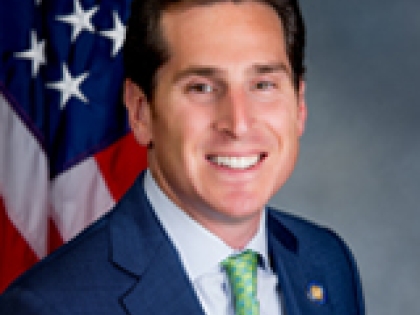
Town adopts Baldwin zoning overlay district
Hempstead Town Board voted on Jan. 21 to adopt the Baldwin zoning overlay district, which will have a temporary zoning code meant to encourage developers to build in the area and revitalize the struggling downtown that has had empty storefronts and vacant buildings for nearly 20 years.
Town officials and members of VHB Engineering, a consulting team that helped draw plans for the mixed-use district, said developers have been eyeing Grand Avenue and the surrounding area in anticipation of the district’s adoption.
VHB finished the state-mandated environmental analysis and collected public comments last year. An overlay district tailors zoning requirements to a particular area to best encourage development with the least possible disruption.
The overlay zone is being implemented in tandem with the Downtown Revitalization Initiative, for which Baldwin received a $10 million state grant. Gov. Andrew Cuomo announced last summer that Baldwin had won the grant out of a pool of almost 100 applicants. The funding was awarded as part of the state’s Downtown Revitalization Initiative, which officials said aims to revitalize communities and boost the local economy.
At a town meeting on Jan. 21, Councilwoman Dorothy Goosby, who represents parts of Baldwin, said limits on density were previously removed from the plans, but that she, Supervisor Donald Clavin, and Councilmen Christopher Carini and Anthony D’Esposito “will immediately begin working on the necessary amendments that will return density limits to this overlay zone, and we will have lines of communication to the civic, the chamber and other community stakeholders.”
Goosby then recommended adopting the overlay district.
All council members voted to adopt the plans except for Carini, who said, “The reason why I didn’t vote on this is I wasn’t here for the process. I’m fully on board and looking forward to this process going forward . . . Good luck, Baldwin. I’ll be there with you.”
“We really appreciate the fact that the community has had input in this and will continue to have input in this,” said Karen Montalbano, the government liaison for the Baldwin Civic Association. “It’s our community. It’s something that we are looking forward to developing and getting the right development that works for everybody — for the developer, for the town, for the people of Baldwin.”
She also thanked Goosby for acknowledging that “there is still some work to be done.”
“We look forward to working with you,” Montalbano told the council members, “and getting the best type of development for Baldwin.”
“Thank you for voting in favor of the overlay zoning for Grand Avenue in Baldwin,” said Eric Alexander, director of Vision Long Island, who helped draft plans for the overlay project. “I think it’s just a fantastic step.”
He thanked representatives who played important roles in the process, including former Councilwoman Erin King Sweeney, former Supervisor Laura Gillen, County Executive Laura Curran, Assemblywoman Judy Griffin and State Sen. Todd Kaminsky, as well as town officials, the Baldwin Chamber of Commerce and the Baldwin Civic Association.
“What we see for the community of Baldwin — what they’ve been asking for — is mixed-use development, small businesses to thrive, walkability and really that sense of place, that Main Street feel, they want to get back to on Grand Avenue,” Alexander said.
“Also, big isn’t always the most important thing,” he added. “Big projects are good, but a lot of small and medium-scale projects have advanced downtown revitalization, so you’ll be under a lot of pressure, maybe from the state, maybe from outside forces, to say do big, do big, do big. It’s not just about big. Sometimes you need smaller projects to get these things going.”
At one of the latest meetings of the Baldwin Downtown Revitalization Initiative, the Local Planning Committee, comprising community leaders and business owners, reviewed ideas for potential projects, like library renovations and facade improvements for Malkin’s Appliances, and worked to formulate specific plans for them.
“The last thing I’d say is keep it community-driven,” Alexander said. “That’s what got consensus here. It only happened because of community collaboration — all the levels of government working on the same page.”